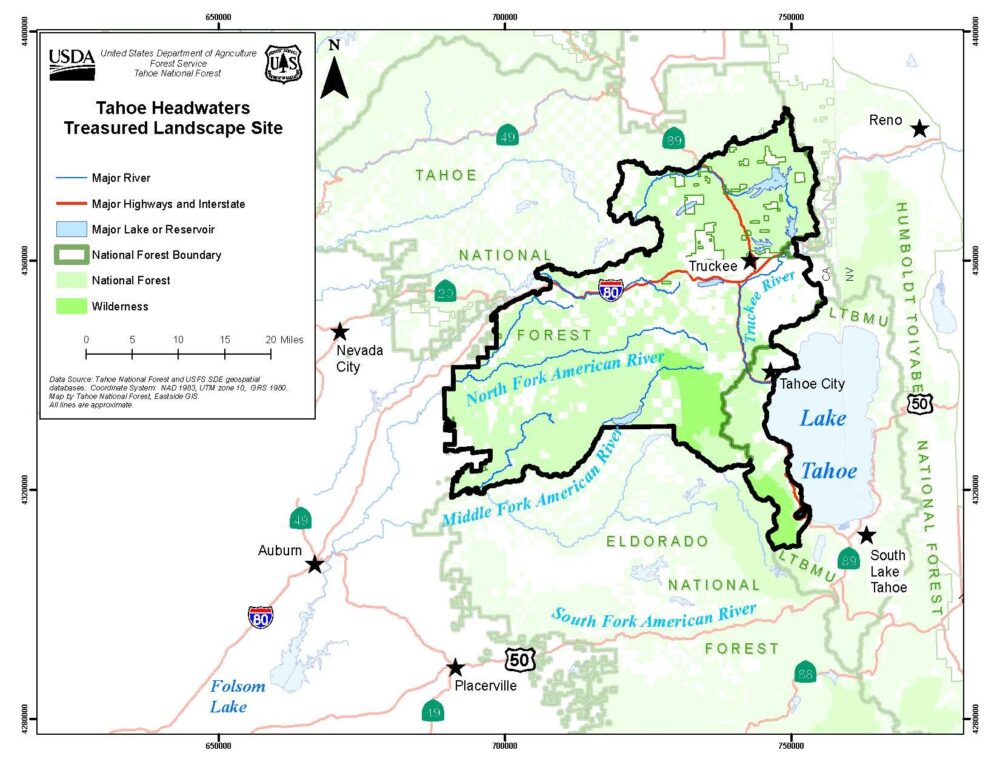Working closely with local communities, we are supporting healthy forests, sustainable recreation and clean water on the Tahoe National Forest and the Lake Tahoe Basin Management Unit.
The NFF’s largest Treasured Landscapes site, the Tahoe Headwaters, covers 614,000 acres in the Sierra Nevada Mountains. Rising from low-elevation foothills to nearly 11,000 feet around Lake Tahoe, its forests include blue oak, ponderosa and sugar pine, red fir, lodgepole pine and western white pine.
With the Truckee River draining Lake Tahoe and running east and the American and Yuba Rivers running west, the Tahoe Headwaters provide drinking water to nearly 12 million people and support thousands of acres of farmland in Nevada and California. Myriad lakes, canyons, and peaks – including the Granite Chief Wilderness, Tahoe Rim Trail, and a section of the Pacific Crest Trail – attract over 24 million annual visitors, including hikers, hunters, anglers, bikers, off-highway-vehicle enthusiasts, skiers and climbers.


